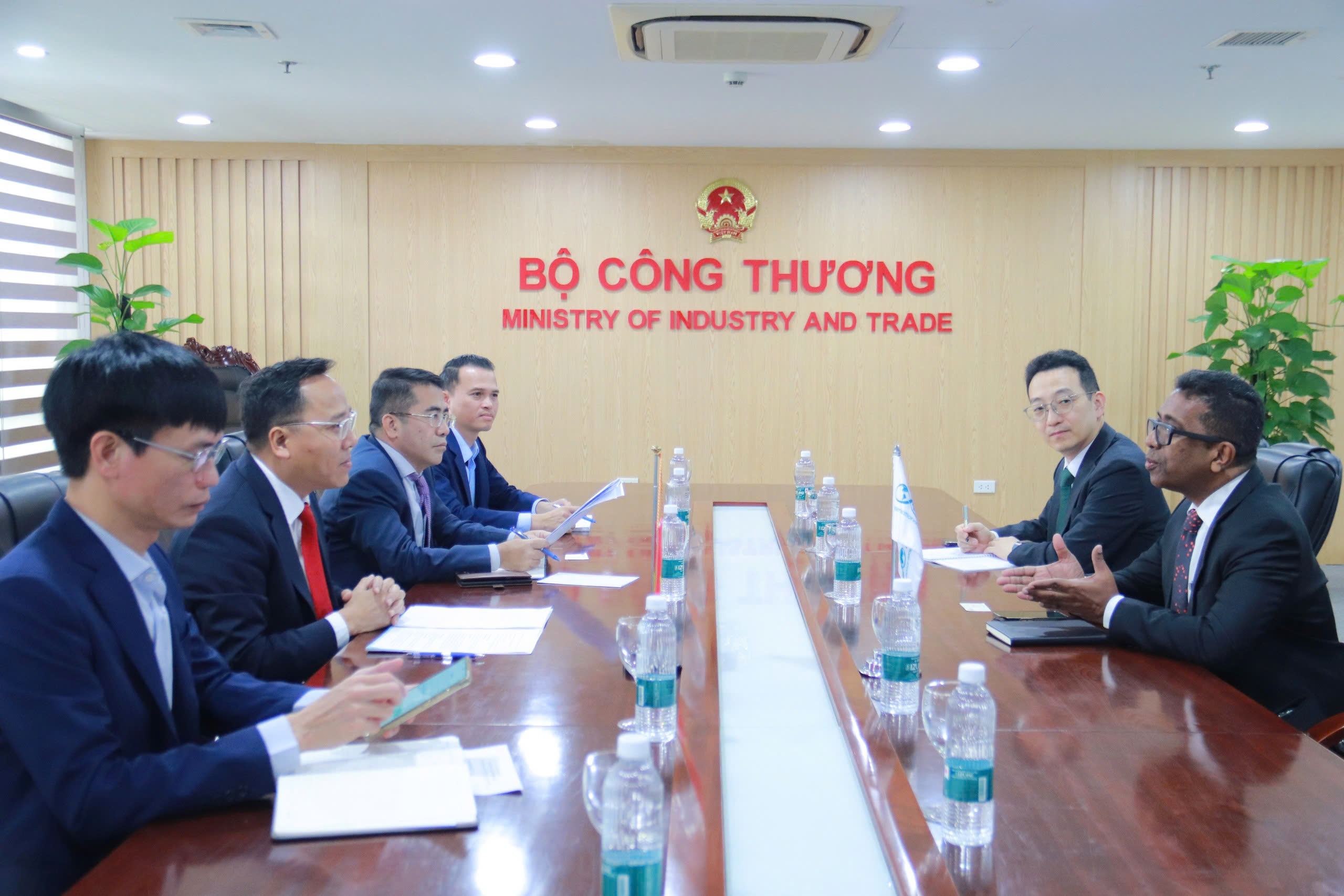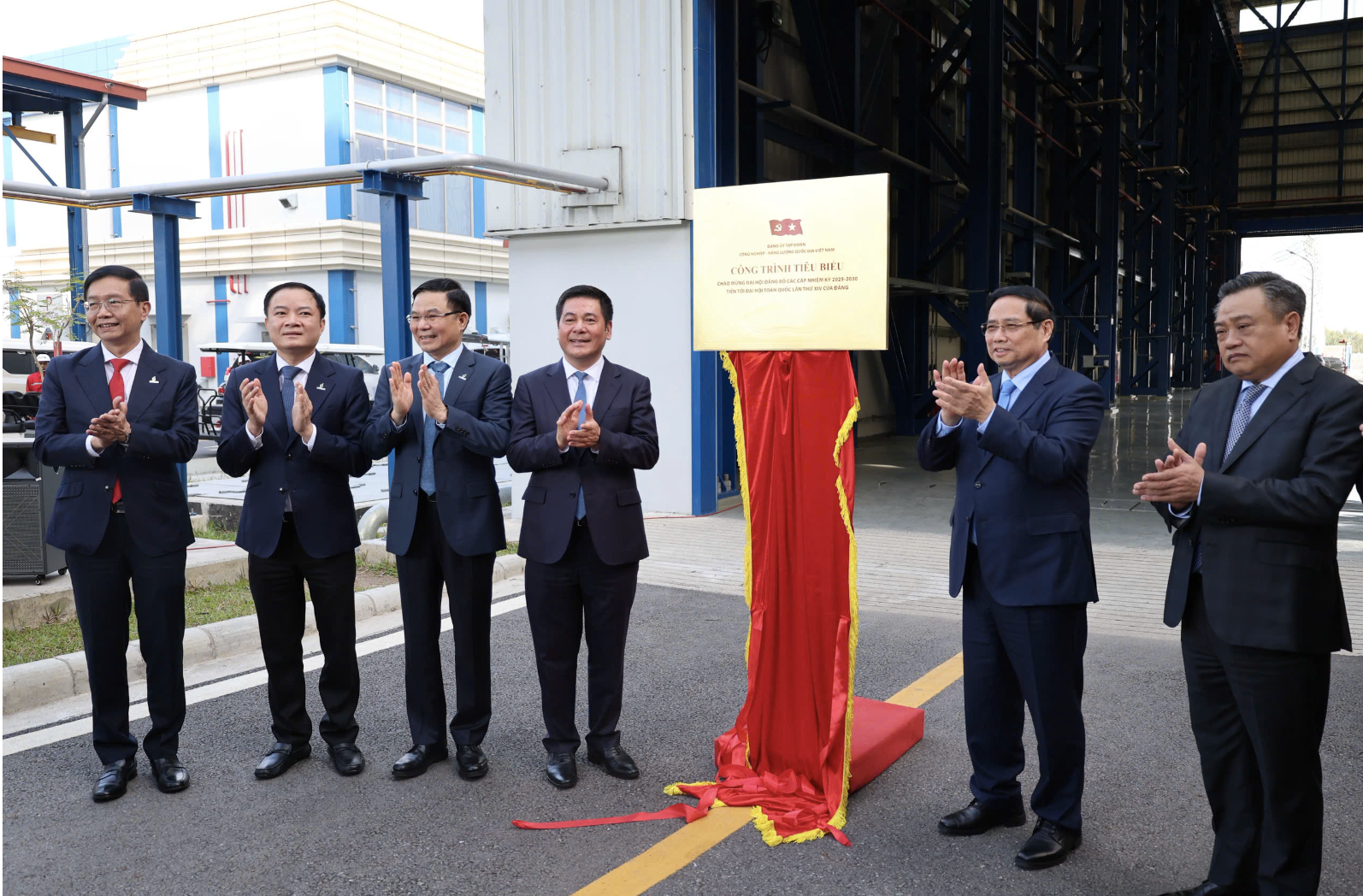
Viet Nam joins IRENA, expands cooperation on renewable energy
19:05 | 23/03/2025 11:10 | 16/12/2025Cooperation
Localization rate remains low
Speaking at the seminar “Opening new directions for supporting industries in the energy sector” hosted by the Industry and Trade Magazine on November 3, Chu Viet Cuong, Director of the Industrial Development Support Center under the Industry Agency (the Ministry of Industry and Trade), noted that the localization rate in Vietnam’s energy projects, especially in wind, solar, hydropower, and thermal power, has improved but remains below expectations set by the Government.
Specifically, Chu Viet Cuong pointed out that in the wind power sector, Vietnam has achieved a localization rate of around 25 - 30% of equipment value, mainly in foundation structures, steel components, piles, turbine towers, and connection systems. Several domestic enterprises such as CS Wind, TOMECO, Lilama, and Dong Anh Electrical Equipment (EEMC) are now capable of manufacturing and supplying internationally certified components.

Overview of the seminar.
In the solar sector, localization stands at roughly 35 - 40%, focusing on mounting structures, cables, switchboards, inverters, and part of the PV module segment. Vietnam is currently among the world’s top 10 solar panel producers, with major players including Boviet Solar, IREX Solar, and Vina Solar. However, the semiconductor materials, wafer, and cell value chains remain heavily import-dependent.
“These results are encouraging, but Vietnam’s localization rate still lags behind other countries in the region such as Thailand (60 - 65%) and Malaysia (55 - 60%) in renewable energy,” Chu Viet Cuong said. “The main barriers lie in financial constraints, technological limitations, and insufficient modern equipment. More importantly, the shortage of high-quality human resources and technical barriers are preventing local enterprises from joining the global supply chain,” he added.
Echoing this view, PhD. Vu Van Khoa, Deputy Director of the Institute of Mechanical Research, analyzed that Vietnam currently has over 2,000 enterprises in energy-related supporting industries, yet only about 300 of them are involved in segments of the global supply chain. Most domestic firms focus on low value-added stages and simple components, while core elements such as turbines, generators, and control systems are still imported.
From the business perspective, Le Van An, Vice Chairman of the Vietnam Association of Mechanical Enterprises and Chairman of the Board of Agrimeco, emphasized that his company has mastered the design, construction, and installation of key hydropower equipment, saving projects thousands of billions of VND. However, he also warned about the tendency of investors prioritizing low prices over technical capacity, leading to unhealthy competition and potential quality risks.
Supporting industries: A key pillar of the energy sector
At a time when the global energy transition accelerates the demand for clean and renewable energy, Vietnam is presented with a historic opportunity to move higher in the global energy value chain. In this context, supporting industries play a decisive role in enhancing technological autonomy, increasing localization rates, and raising added value across the energy sector.
According to Tran Kien Dung, an expert from the International Labour Organization (ILO) and Director of ProfM Vietnam Co., Ltd., the development of supporting industries in energy depends on three critical pillars.

The supporting industry for the energy sector still has plenty of room for development.
First, management capacity, businesses must adopt long-term strategic visions, establish efficient governance systems, and design short-, medium-, and long-term development plans to ensure stable operations.
Second, technological capability, enterprises must be able to access, master, and embed advanced technologies into products to strengthen their position within global supply chains.
Third, human resources, the vital factor that ensures all systems of management and technology function effectively. Without a skilled workforce, no enterprise can grow strong.
“To break through, Vietnamese enterprises must invest simultaneously in management, technology, and people, thereby enhancing competitiveness and ensuring sustainable growth,” Tran Kien Dung stressed.
Dr. Vu Van Khoa proposed four key solutions to enable Vietnamese firms to participate more deeply in the supporting industry chain for energy.
First, the Government and relevant ministries should soon issue comprehensive technical standards and regulations for domestic energy equipment and mechanical components. This legal framework would allow Vietnamese products to be utilized in major projects. At the same time, a mandatory localization ratio should be established to create sufficient market scale, encouraging private investment.
Second, administrative procedures must be simplified, and certification processes shortened to help businesses commercialize research and innovation outcomes more rapidly.
Third, financial support mechanisms should be strengthened through innovation funds and expanded land resources for research and development (R&D) centers, particularly for enterprises and institutes meeting international standards in the energy field.
Fourth, stronger linkages between domestic and foreign-invested (FDI) firms should be fostered to accelerate technology transfer. Meanwhile, energy manufacturing clusters should be planned in areas with competitive advantages such as Binh Thuan, Ninh Thuan, and Ba Ria - Vung Tau to reduce logistics costs and improve competitiveness.
For their part, Vietnamese enterprises must focus resources on products with large market demand, upgrade technology and machinery, strengthen corporate governance, and invest in human capital. They should comply with green industrial standards, obtain international certifications, build accredited testing laboratories, and actively connect with both domestic and FDI corporations to gradually integrate into the global energy value chain.
Sharing the same view, Chu Viet Cuong underlined that the development of supporting industries for energy is not only essential for ensuring national energy security but also a strategic step for Vietnam to master new-generation industrial technologies and achieve its Net Zero goal by 2050.
“With strong government backing, proactive transformation by enterprises, and the scientific foundation built by research institutes and universities, I firmly believe Vietnam will advance rapidly and confidently integrate into the global energy sector in the coming years,” Chu Viet Cuong affirmed.
According to the revised National Power Development Plan VIII for 2021 - 2030, with a vision to 2050, Vietnam’s total installed power capacity is expected to exceed 236,000MW by 2030, more than three times the current level, with renewables accounting for about 36%.
Alongside that, numerous power projects, thermal, gas-fired, hydropower, LNG, and offshore wind, are being implemented nationwide. Each project requires hundreds of thousands of technical details, steel structures, mechanical components, electric cables, valves, transformers, turbines, and control systems, all of which Vietnamese supporting industries are capable of producing.
Experts predict that the renewable energy segment alone could generate a multi-billion-USD market for Vietnam’s supporting industries over the next decade.

19:05 | 23/03/2025 11:10 | 16/12/2025Cooperation

19:05 | 23/03/2025 10:18 | 15/12/2025News and Events

19:05 | 23/03/2025 21:02 | 14/12/2025Industry

19:05 | 23/03/2025 20:47 | 14/12/2025News and Events

19:05 | 23/03/2025 15:35 | 14/12/2025Trade